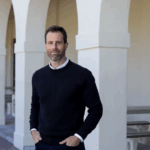|
Getting your Trinity Audio player ready...
|
AFR journalist, Kate Cowling, recently interviewed Montaka’s Andrew Macken for a piece that was recently published and can be found here. Perhaps of more interest for our readers is the full transcript of the interview, which is shown below.
1. What are the key tenets of your long portfolio investment process?
- We are seeking to buy businesses that are characterized by three things: (i) the business is of high quality; (ii) the business has attractive future prospects; and (iii) the business can be acquired in the market place at a discount to our assessment of its intrinsic value.
- Now, we have a very specific definition of what “high quality” means. It does not mean the company is large, or well-known, or “blue-chip” (whatever that means). By quality, we are referring to the ability of the business to generate above-average returns on invested equity. We need to be able to see evidence of these returns in the historical financials of the business. We need to be able to identify the source of whatever advantage it is that allows the business to generate these returns. And we then need to make an assessment over the extent to which this advantage will persist into the future. This assessment then informs our view on the future prospects of the business; and, in turn, our assessment of the business’ intrinsic value.
2. At what point do you decide to dispose of a company? Is there a set metric? Or is it when it doesn’t match your broader investment thesis?
- There are three key scenarios under which we would dispose of a business that we owned:
i. If the market value of the business reached the top-end of our intrinsic value range, this implies that (i) the potential upside from the current price level is now limited; and (ii) the potential downside from the current price level is now high. On this basis, we would exit the position.
ii. If the future prospects of the business became impaired. For example: the largest banks in Australia are high-quality businesses, however, in recent times their future prospects have been downgraded: credit growth in the future may not be as strong as it was in the past; while capital requirements are only going to increase.
iii. If new information came to light that illustrated to us that our thesis was simply wrong. It happens. Investors should continually try to disprove their hypotheses about the businesses they own, not confirm them.
3. Can you think of any examples where you expected a company to perform but realised a little too late that it was not going to turn around?
- We used to own American Express (NYSE: AXP).
- We knew competition was intensifying in the credit card space, however, we believed in the unique asset that Amex owned with respect to its closed-loop network (card issuer, transaction processor, merchant acquirer) and spend-centric/high-rewards business model.
- As the business continued to underperform (and the stock continued to fall) we held on for a period believing Amex’s business model would remain intact.
- Eventually we decided to exit the position. We conceded competition in the space is becoming too aggressive. Rewards-based credit cards were being issued by other major competitors (e.g. JP Morgan) as loss-leaders to acquire clients and cross-sell other more valuable products. On this basis, Amex simply cannot compete. We were a little too late to form this conclusion, in retrospect.
4. On the other side of that, are there any examples of scenarios where you trusted your process to deliver against market expectations and in turn the stock price rose?
- In the first six weeks of this year, Challenger (ASX: CGF) dropped from $8.50 to $6.50/share.
- It was during a period of global market turmoil and reflected fears that credit defaults could spike as a result of: (i) the collapse in global commodity prices, (ii) risks in the Eurozone banking system; and (iii) risks in emerging market banking systems, particularly that of China.
- The market was concerned that, should credit defaults increase, then the assets backing Challenger’s annuity products could become impaired and shareholders would have to foot the bill instead.
- Our process led us to evaluate this risk in detail. Challenger already creates provisions for credit defaults at levels far higher than what are being observed now – and even higher than what was observed during the GFC.
- This process led us to hold our position (we even bought additional shares at the lower prices) and ride out the pain with the expectation of a recovery. The stock recovered to its original position over the subsequent six weeks.
5. We all make mistakes, but is there added pressure on fund managers to get all the calls right? How do you communicate to your clients the need to take some risks?
- Fund managers are under pressure from clients to get their calls right. Interestingly, they are often under more pressure from themselves to get their calls right.
- Yet, good clients and fund managers themselves understand that not every call is going to be correct. They also understand that if the investment process is logical and followed with discipline, then attractive outcomes will be produced over the medium term. Month to month returns are mostly noise. It takes years for skill to shine through. Patience is key.
- We spend an enormous amount of time communicating with our clients in writing, video and in person. We seek to demystify the funds management business. We communicate our views on businesses, industries, markets and investing in general. We know, therefore, that when we are wrong, our clients will already know what our thought-process was and why we made the decisions we made. We believe in transparency.
![]()
Andrew Macken is a Portfolio Manager with Montgomery Global Investment Management. To learn more about Montaka, please call +612 7202 0100.




